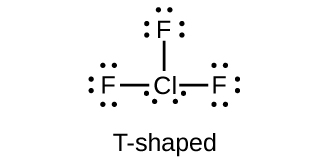

When we consume sodium, it's absorbed into the bloodstream and extracellular spaces. While low sodium levels can cause muscle cramps due to nerve and muscle cells not being able to control signal transmission and reception, too much sodium can cause problems like high blood pressure. Sodium is an essential nutrient in animal cells, but it's possible to get too much of a good thing. To see how sodium uses these differences to enable signal transmission in nerve and muscle cells, see the article on diffusion. The chemical differences between sodium and potassium are useful in controlling diffusion across our cell membranes, while the electrostatic differences between sodium and chloride are important in maintaining an electrical imbalance across those same cell membranes. Sodium also complements potassium, because while they are both positive ions, they are also chemically different. It complements the chloride ion because they have opposite charges which balance each other in many biological processes. That's why it doesn't explode on contact with water, and why it has nutritional value. Table salt contains sodium in its ionic form. The formation of the water molecule conveniently fills the outer shells of all three atoms, which is why water molecules form from the two gases.

These bonds are formed because the oxygen atom needs two electrons to fill its outer shell, and each hydrogen atom needs one electron. Water (H 2O) is a molecule consisting of two hydrogen atoms covalently bonded to an oxygen atom. To understand why metallic sodium is so reactive, let's see what happens when it comes into contact with water. The combination of metallic sodium atoms with each other is relatively uneventful. These small electrical imbalances initiate metallic bonding at room temperature, causing the atoms to clump together into a soft metal you can cut with a knife. The random motion of the electrons in this cloud cause shifts in the electrical properties of the individual atoms, which in turn cause the atoms to be mildly attracted to each other. The outer electrons of each sodium atom aren't desired by any of the sodium atoms, so a cloud of unwanted electrons form. It's easier to get rid of one outer electron than it is to aquire seven more electrons, so it looks to give up the electron.
#CHLORINE ATOM FULL#
To be chemically stable it needs to have a full outer shell. It has only one electron in its outer shell, however, which makes it chemically reactive. The sodium atom (Na) has eleven protons and eleven electrons, giving it a neutral (balanced) electrical charge. We examine the chemical properties of sodium in its reactive (toxic) state here, and look at sodium in its ionic (nutritional) state in the next section. While table salt contains an ionized form of sodium (in combination with chloride), non-ionized "metallic" sodium has a very different set of chemical properties than the sodium ions in table salt. When most people think of sodium, they think of table salt.
:max_bytes(150000):strip_icc()/Calcium-58b602433df78cdcd83d4c16.jpg)
Ions form salts, not molecules, but they perform many important functions in nutrition. The chloride ion now has eighteen electrons and seventeen protons, so it's become a negative ion.īecause the sodium ion has a positive charge, and the chlorine ion has a negative charge, they are attracted to each other, and form an ionic bond. When this happens, the atom is called a positive ion. This upsets the balance of charges between the protons and electrons, which causes the sodium atom to have a net positive charge. The sodium ion now has only ten electrons, but still has eleven protons. With the transfer of the electron, however, they become electrically charged, and combine into salts through the formation of ionic bonds. With filled outer shells they are no longer chemically active and can't form covalent bonds to become part of a molecule. The sodium (Na) atom transfers one electron to the chlorine (Cl) atom, so that they both have full outer shells. When sodium and chlorine atoms come together to form sodium chloride (NaCl), they transfer an electron.


 0 kommentar(er)
0 kommentar(er)
